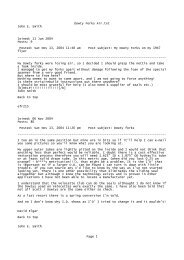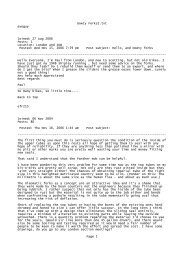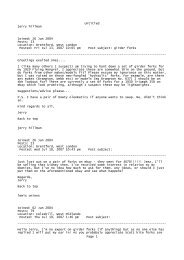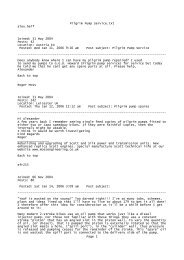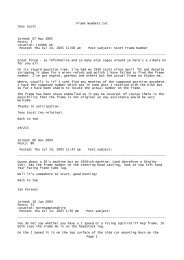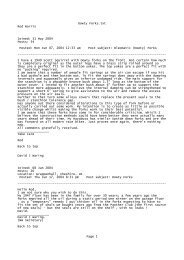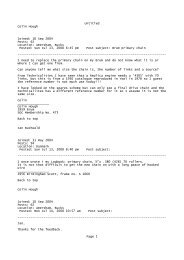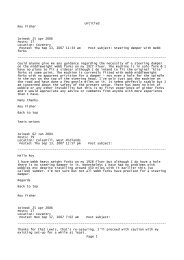Scott Newsletter 8 - Scott Technicalities
Scott Newsletter 8 - Scott Technicalities
Scott Newsletter 8 - Scott Technicalities
Create successful ePaper yourself
Turn your PDF publications into a flip-book with our unique Google optimized e-Paper software.
<strong>Scott</strong>’s in competition.<br />
Development of a <strong>Scott</strong> racer...<br />
In 1967 I bought my first <strong>Scott</strong>, a very nice TT Replica. I soon tried my hand at vintage racing<br />
and as, at that time there were many people still racing, there was enough for a “Vintage<br />
Standard” i.e. road going class up to 1930. Very soon I was finishing in the first three but this<br />
was to be a shortlived glory. As the entry was declining, the race was enlarged by including<br />
bikes up to 1951, which meant competing against Triumph 650 Thunderbirds with modern<br />
tuning parts.<br />
I would not change the specification of the Replica, as it was very original, so it retained its 20”<br />
wheel rims and hand change. It was not possible to get race quality tyres 20” wheels, so a wet<br />
weekend race meeting at Cadwell Park saw me negotiating the right left adverse camber<br />
downhill bend combination called “The Gooseneck”, chasing a 650 Triumph. I remember<br />
having one hand changing gear and the left hand holding a very light feeling handlebar as both<br />
wheels were sliding! I said out loud to myself “This is crazy, it’s not a case if you will crash it,<br />
only when and it deserves better”. When I returned to the paddock, I put it on the trailer and<br />
resolved to build a racer from what spares I could obtain.<br />
George Silk found me a single down tube frame and I had a copy of the original long optional<br />
tank made by Ray Pettit. The rest was fairly standard. The first problem was a crash due to the<br />
gearbox output bush seizing, even after I gave it a big clearance. The gearbox and outrigger<br />
final drive received careful attention and many detail modifications. The next problem was<br />
cranks, I must have broken about 6 sets and the case was patched up with body filler and<br />
expanded aluminium mesh.<br />
I decided that the engine would perform better if the inlet tract was bigger and so welded up<br />
where the flywheel runs under the inlet tract floor and lowered the floor. The flywheel was made<br />
a little smaller to clear.<br />
I had found that there was no steel available to me at that time to solve the crank breakage<br />
problem, so in 1977 I designed a compact four bearing crank conversion that is still used today.<br />
The cranks were complimented by a pair of titanium rods, the little ends of which were<br />
controlled within the pistons by spacing washers.<br />
Edition 7 26 – 2006







